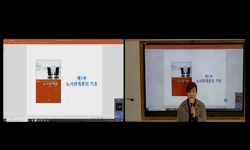Countries which restrict, by statutes, claims for damages against workers and trade unions on the ground of illegal industrial action not always protect the right to strike widely. In some countries where the right to strike is regarded principally as...
http://chineseinput.net/에서 pinyin(병음)방식으로 중국어를 변환할 수 있습니다.
변환된 중국어를 복사하여 사용하시면 됩니다.
- 中文 을 입력하시려면 zhongwen을 입력하시고 space를누르시면됩니다.
- 北京 을 입력하시려면 beijing을 입력하시고 space를 누르시면 됩니다.

전선 : 쟁의행위에 대한 손해배상청구의 해석론 및 입법론의 재검토 = Review on Interpretation and Legislation Regulating Employers` Action for Damages against Industrial Action
한글로보기https://www.riss.kr/link?id=A99837697
- 저자
- 발행기관
- 학술지명
- 권호사항
-
발행연도
2013
-
작성언어
-
- 주제어
-
KDC
300
-
등재정보
KCI등재
-
자료형태
학술저널
- 발행기관 URL
-
수록면
361-394(34쪽)
- DOI식별코드
- 제공처
- 소장기관
-
0
상세조회 -
0
다운로드
부가정보
다국어 초록 (Multilingual Abstract)
Countries which restrict, by statutes, claims for damages against workers and trade unions on the ground of illegal industrial action not always protect the right to strike widely. In some countries where the right to strike is regarded principally as a weapon in collective bargaining, the scope of protected industrial action is narrow in common. On the other hand, in other countries where the right to strike is recognised as a fundamental human right, the scope is relatively wide so that the strike can be used for other purposes besides collective bargaining. The United Nations and the ILO see the right to strike as a human right that has its international roots in the International Covenant on Economic, Social and Cultural Rights and the ILO Convention 87. In Korea, likewise, the strike is a right protected by the Constitution. It is not important to limit maximum amount of damages recoverable or protect the assets of the union and private bank accounts of its leaders but to enlarge the dimension of legal industrial action. Therefore, it is necessary to reform fundamentally current labour legislations related to industrial action so that the value of the right to strike should not be impaired by employers` action for damages.
동일학술지(권/호) 다른 논문
-
판례분석 : 시각적 성 표현물 및 표현행위의 음란성 판정 기준 비판
- 민주주의법학연구회
- 조국 ( Kuk Cho )
- 2013
- KCI등재
-
자료 : 곽노현 교육감 사건 헌법재판소 결정에 대한 재심청구서
- 민주주의법학연구회
- 곽노현
- 2013
- KCI등재
-
자료 : 이동흡 헌법재판소 소장 후보자의 임명을 반대한다
- 민주주의법학연구회
- 송기춘
- 2013
- KCI등재
-
군사주의에 갇힌 헌법재판소 국가안보 관련 헌법재판소 결정문에 대한 비판적 담론 분석
- 민주주의법학연구회
- 임재성 ( Jae Sung Lim )
- 2013
- KCI등재




 KCI
KCI KISS
KISS



